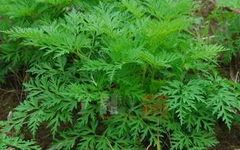All herbs that promote blood circulation, facilitate blood flow, and dissipate blood stasis are referred to as huoxue quyu yao (活血祛瘀药). Among them, those with stronger blood-invigorating and stasis-removing effects are also known as poyao (破血药) or zhuyu yao (逐瘀药).
Blood is one of the essential substances in the human body, and it must flow smoothly to nourish the entire body. If there is obstruction, it often leads to symptoms such as pain and swelling. Huoxue quyu yao function to promote blood circulation and remove stasis, alleviating various symptoms caused by blood stasis obstruction, thus making their clinical application very important.
Huoxue quyu yao are mainly applicable to conditions caused by blood stasis obstruction, such as chest and flank pain, rheumatic pain, masses, ulcer swelling and pain, trauma pain, as well as menstrual irregularities, amenorrhea, dysmenorrhea, and postpartum abdominal pain due to stasis.
These herbs are often pungent, bitter, and salty, with varying properties of cold, warm, or neutral, primarily entering the liver and heart meridians.
Precautions for the Use of Blood-Invigorating and Stasis-Removing Herbs
1. Huoxue quyu yao are suitable for various blood stasis obstruction conditions, but each has its own strengths, and should be selected according to the specific condition.
2. Blood stasis obstruction often accompanies qi stagnation; therefore, to enhance the blood-invigorating and stasis-removing effects, they are often combined with qiyao (理气药). For example, in cases of stasis due to ulcers, they can be combined with qingre yao (清热药).
3. Huoxue quyu yao may pose a risk of injuring the blood, so attention must be paid to dosage, and they should be appropriately combined with yangxue yao (养血药).
4. In cases of blood stasis obstruction with qi deficiency, they can be combined with buqi yao (补气药).
5. In cases of excessive menstruation or for pregnant women, huoxue quyu yao should be avoided or used with caution.
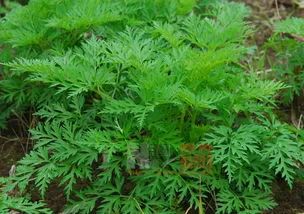
Chuanxiong (Ligusticum chuanxiong)
Medicinal Use: The rhizome of the herbaceous plant Chuanxiong from the Umbelliferae family.
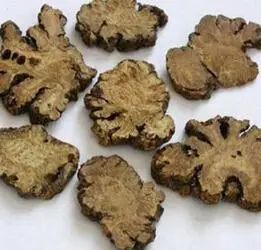
Taste and Meridian Entry: Pungent, warm. Enters the liver, gallbladder, and pericardium meridians.
Functions: Invigorates blood, removes stasis, dispels wind, and alleviates pain.
Clinical Applications: 1. Used for chest and flank pain, rheumatic pain, masses, ulcer swelling and pain, trauma pain, menstrual irregularities, amenorrhea, dysmenorrhea, and postpartum pain due to stasis.
Chuanxiong is pungent and aromatic, promoting blood circulation and removing stasis, making it suitable for various blood stasis obstruction conditions, especially as a key herb for regulating menstruation in gynecology. For treating menstrual irregularities, amenorrhea, and dysmenorrhea, it is often combined with Danggui (当归) and others; for chest and flank pain, it can be combined with Chaihu (柴胡) and Xiangfu (香附); for rheumatic pain, it can be combined with Qianghuo (羌活) and Du Huo (独活); for masses, it can be combined with Sanleng (三棱) and E Zhu (莪术); for ulcer swelling and pain, trauma pain, it can be combined with Ruxiang (乳香) and Moyao (没药).
2. Used for headaches due to colds, both frontal and lateral headaches.
Chuanxiong is pungent and aromatic, capable of ascending to the head, thus having the effect of dispelling wind and alleviating pain, making it a key herb for treating headaches. It can be combined with Xixin (细辛) and Baizhi (白芷), and can also be appropriately combined according to the meridian involved in the headache. For headaches caused by wind-cold, it can be combined with Jingjie (荆芥), Fangfeng (防风), and Qianghuo; for headaches caused by wind-heat, it can be combined with Chrysanthemum (菊花) and Jiangcan (僵蚕).
In recent years, this herb has been commonly used in clinical practice for treating coronary heart disease and angina.
Prescription Names: Chuanxiong, Fuxiong (washed, dried, and cut for use), Jiu Chuanxiong (lightly fried until slightly charred).
General Dosage and Administration: 3-9 grams, decocted for oral administration. Ground into powder for oral intake, 1-1.5 grams per dose.
Notes: 1. Chuanxiong was originally named Xiongzhu (芎藭). It is pungent, warm, and aromatic, capable of dispersing and ascending to the top; it also enters the blood and descends to the blood sea. Its blood-invigorating and stasis-removing effects are extensive, suitable for various blood stasis obstruction conditions; it dispels wind and alleviates pain effectively, treating headaches and rheumatic pain.
2. Ancient texts referred to Chuanxiong as a qi herb in the blood, suggesting its functions of dispersing, relieving stagnation, promoting circulation, and alleviating pain. This interpretation can be referenced.
3. This herb is pungent and warm, thus not suitable for those with yin deficiency and yang hyperactivity or liver yang hyperactivity; it should also be avoided in cases of excessive menstruation and for pregnant women.
Example Formulas: Chuanxiong Tea Tiao San (川芎茶调散) (from Heju Fangji): Chuanxiong, Xixin, Baizhi, Qianghuo, Fangfeng, Jingjie, Bohe, and Licorice. Used for treating headaches due to wind-cold.
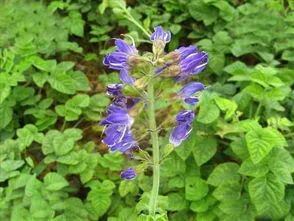
Danshen (Salvia miltiorrhiza)
Medicinal Use: The root and rhizome of the herbaceous plant Danshen from the Lamiaceae family.
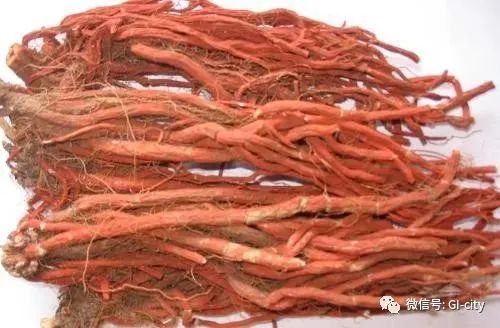
Taste and Meridian Entry: Bitter, slightly cold. Enters the heart, pericardium, and liver meridians.
Functions: Invigorates blood, removes stasis, cools blood, clears the heart, nourishes blood, and calms the spirit.
Clinical Applications: 1. Used for chest and rib pain, rheumatic pain, masses, ulcer swelling and pain, trauma pain, menstrual irregularities, amenorrhea, dysmenorrhea, and postpartum pain due to stasis.
Danshen also has a very broad blood-invigorating and stasis-removing effect, especially effective for treating chest and rib pain, masses, as well as menstrual irregularities, amenorrhea, and dysmenorrhea, often used in combination with Chuanxiong. However, due to its cold nature, it is particularly suitable for treating blood-heat and stasis conditions. In treating chest and abdominal pain due to qi stagnation and blood stasis, it is often combined with Sharen (砂仁) and Tanxiang (檀香).
2. Used for warm diseases with heat entering the nutrient and blood levels, causing skin rashes, and mental confusion and irritability.
Danshen’s cold nature allows it to cool the blood and clear the heart, thus it can be used to treat heat entering the nutrient and blood levels, skin rashes, and mental confusion and irritability, often combined with fresh Rehmannia, rhinoceros horn, and Xuan Shen.
3. Used for palpitations, anxiety, and insomnia.
Danshen also has the effect of nourishing blood and calming the spirit, used for palpitations and insomnia, often combined with sour jujube seed and Biota seed.
In recent years, this herb has been commonly used in clinical practice for treating coronary heart disease, myocardial infarction, liver and spleen enlargement, and ectopic pregnancy.
Prescription Names: Danshen, Zidan (washed, dried, and cut for use), Chao Danshen (lightly fried until slightly charred), Pig Heart Blood Mixed with Danshen (mixed with pig heart blood and yellow wine, then dried to enhance blood-nourishing and calming effects).
General Dosage and Administration: 9-15 grams, decocted for oral administration.
Notes: 1. Danshen is bitter and slightly cold, entering the heart and liver, specifically entering the blood, cooling and also supplementing. Its blood-invigorating and stasis-removing effects are extensive, able to treat various blood stasis obstruction conditions; it enters the nutrient level to cool the blood, showing significant efficacy in treating febrile diseases with skin rashes and heat toxins. As for its calming effects, it can be paired with heart-clearing herbs for heat entering the pericardium; when paired with tonifying herbs, it is used for insomnia and palpitations. Recently, it has been praised for its clinical use in angina, phlebitis, and liver and spleen enlargement.
2. Ancient texts have stated that “one herb of Danshen has the same effect as four substances”. The Four Substances Decoction (四物汤) consists of Rehmannia, Peony, Angelica, and Chuanxiong, and the variations in the monarch and minister herbs, as well as the changes in the medicinal parts used, lead to different effects of nourishing and invigorating blood. Danshen has a strong blood-invigorating effect but is insufficient in blood-nourishing power, thus its blood-invigorating and stasis-removing effects can be compared to the Four Substances, but its blood-nourishing effects are not equivalent.
Example Formulas: Danshen Decoction (丹参饮) (from Yizong Jinjian): Danshen, Sharen, Tanxiang. Used for qi stagnation and blood stasis, stomach pain.
External Pregnancy Formula (宫外孕方) (compiled by Guangzhou University of Traditional Chinese Medicine): Danshen, Chisha, Taoren, Ruxiang, Moyao. Used for ectopic pregnancy.
Compound Danshen Tablets (复方丹参片) (from Pharmacopoeia of the People’s Republic of China): Danshen, Sanqi, Bingsuan. Used for chest tightness and angina.
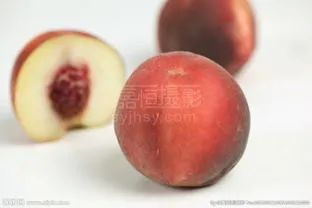
Taoren (Prunus persica)
Medicinal Use: The mature seeds of the peach or mountain peach from the Rosaceae family.
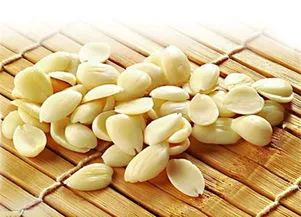
Taste and Meridian Entry: Bitter, sweet, neutral. Enters the heart, liver, and large intestine meridians.
Functions: Invigorates blood, removes stasis, moistens the intestines, and promotes bowel movements.
Clinical Applications: 1. Used for masses, lung abscess, intestinal abscess, trauma pain, amenorrhea, dysmenorrhea, and postpartum pain.
This herb also has a broad blood-invigorating and stasis-removing effect, commonly used for the aforementioned blood stasis obstruction conditions. For treating lung abscess, it can be combined with Lugen (芦根) and Yiyiren (薏苡仁); for intestinal abscess, it can be combined with Dahuang (大黄) and Dampi (丹皮); for masses, it can be combined with Dahuang and Shuchong; for trauma pain, it can be combined with Chaihu (柴胡) and Chuanxiong; for amenorrhea and dysmenorrhea, it can be combined with Honghua (红花) and Danggui; for postpartum pain, it can be combined with Danggui and Paoginger (炮姜).
2. Used for intestinal dryness and constipation.
Taoren has the effect of moistening dryness and promoting bowel movements, used for constipation, it can be combined with Huoma (火麻仁), Baiziren (柏子仁), Danggui, and Xingren (杏仁).
Prescription Names: Taoren, Taoren Mi, Old Taoren, Single Taoren (remove the seed coat, crush for use), Taoren Powder (remove oil to make powder).
General Dosage and Administration: 3-9 grams, decocted for oral administration. Taoren Powder should be wrapped in a cloth for decoction.
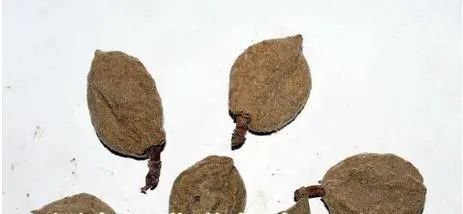
Notes: 1. Taoren has a bitter and sweet flavor and a neutral nature, entering the heart, liver, and large intestine, with a broad blood-invigorating and stasis-removing effect, suitable for treating various blood stasis obstruction conditions. In terms of treatment, it is good for internal abscesses, such as lung abscess; for intestinal abscess, it is a key herb. It is rich in fat and has a moistening effect on the intestines, but in recent clinical practice, it is less used solely for this purpose. It should be avoided in cases of excessive menstruation and for pregnant women.
2. Taoren and Honghua are both blood-invigorating and stasis-removing herbs, with broad effects, often used together; however, Taoren is good for treating lung and intestinal abscesses and has a moistening effect on the intestines, while Honghua is better for invigorating blood and regulating menstruation.
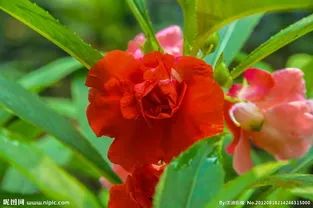
Honghua (Carthamus tinctorius)
Medicinal Use: The tubular flower heads of the herbaceous plant Honghua from the Asteraceae family.
Taste and Meridian Entry: Pungent, warm. Enters the liver and heart meridians.
Functions: Invigorates blood and removes stasis.
Clinical Applications: 1. Used for masses, abscesses, trauma pain, rheumatic pain, menstrual irregularities, amenorrhea, abdominal pain, and postpartum pain.
Honghua is pungent and warm, primarily used for removing stasis rather than invigorating blood, making it a key herb for treating blood stasis obstruction, especially commonly used by women for regulating menstruation. In terms of compatibility, this herb is often used with Taoren; for invigorating blood, it can be combined with Danggui, Chuanxiong, and Baishao; for removing stasis, it can be combined with Sanleng, E Zhu, Dahuang, and Zhichong.
2. Used for dark-colored rashes.
This herb can also be used for rashes that are dark in color, or for heat stagnation in the blood, where the rash is not bright red, taking its blood-invigorating and stasis-removing properties to transform stagnation, often combined with Danggui, Zicao, and Daqingye for cooling blood, clearing heat, and detoxifying.
In recent years, this herb has also been used for treating coronary heart disease and angina, often combined with Danshen, Chuanxiong, and Chisha.
Prescription Names: Honghua, Du Honghua (dried for use).
General Dosage and Administration: 3-9 grams, decocted for oral administration. Excessive menstruation and pregnant women should avoid use.
Additional Herbs with Blood-Invigorating and Stasis-Removing Effects:
1. Blood-invigorating and stasis-removing: Chishao (赤芍药), Mudanhua (牡丹皮), Baijiao (败酱草) (heat-clearing herbs), Dahuang (大黄) (laxative herbs), Xumai (续随子) (laxative herbs), Qumai (瞿麦) (diuretic herbs), Diercao (地耳草) (diuretic herbs), Pingdimu (平地木) (phlegm-resolving herbs), Hupo (琥珀) (calming herbs), Hehuanpi (合欢皮) (calming herbs), Shanzha (山渣) (digestive herbs), Qicao (茜草) (hemostatic herbs), Danggui (当归) (tonifying herbs).
2. Blood-invigorating and promoting circulation: Hongteng (红藤) (heat-clearing herbs), Lulutong (路路通) (qi-regulating herbs), Huizhang (虎杖) (wind-dampness-dispelling herbs).
3. Blood-invigorating and pain-relieving: Jieguli (接骨木), Tougu Cao (透骨草) (wind-dampness-dispelling herbs).
4. Blood-invigorating and regulating menstruation: Xiangfu (香附) (qi-regulating herbs).
5. Blood-invigorating and dissipating masses: Moxiang (麝香) (opening herbs).
6. Blood-invigorating and dissipating stasis: Meiguihua (玫瑰花) (qi-regulating herbs).
7. Dissipating stasis and reducing swelling: Dajie (大蓟) (hemostatic herbs).
8. Dissipating stasis and reducing accumulation: Yeming Sha (夜明砂) (heat-clearing herbs).
9. Dissolving stasis and relieving pain: Sanqi (三七), Puhuang (蒲黄) (hemostatic herbs), Ciweipi (刺猬皮) (astringent herbs).
10. Guiding blood downward: Niuxi (牛膝) (blood-invigorating and stasis-removing herbs).
As parents, not knowing medicine is unkind; as children, not knowing medicine is unfilial. Welcome everyone to visit the WeChat public platform of Caiyun Changzai. If you enjoy acupoint health preservation and want to learn more about TCM health knowledge, please join:
Acupoint Password QQ Learning Group: 184221189


